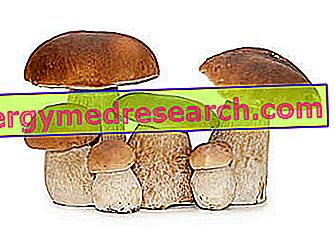Related articles: Bipolar disorder
Definition
Bipolar disorder is a psychiatric condition characterized by severe recurrent mood changes. In particular, the patient experiences moments of extreme euphoria and excitement (manic or hypomanic episodes) alternating with severe depression (depressive episodes). This causes clinically significant distress and impairment of personal, social, work and / or school functioning.
Usually, the disorder begins in late adolescence or early adulthood, and then occurs more or less frequently throughout the entire life span.
The exact cause of bipolar disorder is unknown. Factors that can predispose to the disease are heredity, stressful life events, the dysregulation of serotonin and noradrenaline (neurotransmitters) and psychosocial factors. Some medications can trigger exacerbations in some patients with bipolar disorder; these include sympathomimetics and some antidepressants.
Most common symptoms and signs *
- Aggression
- Hallucinations
- anhedonia
- anguish
- Anorexia
- Asthenia
- Increased appetite
- bradykinesia
- Decline in sexual desire
- dizziness
- palpitations
- Catalepsy
- Catatonia
- Suicidal behavior
- Delirium
- Depression
- Difficulty concentrating
- Tardive dyskinesia
- dysphoria
- Mood disorders
- Muscle pains
- dromomania
- Euphoria
- Nightmares
- Insomnia
- Hypomania
- hypomimia
- Restlessness
- Social isolation
- logorrhea
- Headache
- Nervousness
- Paranoia
- Weight loss
- Mood swings
- Somatisation
- Drowsiness
Further indications
Bipolar disorder is characterized by recurrent passage from mania (persistently elevated, expansive or irritable mood) to severe depression, although many patients have a predominance of one or the other. The disease begins with an acute phase of symptoms, followed by a repetition of remissions and recurrences. The episodes last from a few weeks to 3-6 months. The period of time between the beginning of an episode and the subsequent one varies from patient to patient.
In the manic phase, the symptoms may include: persistent increase in mood, extreme euphoria, hypersensitivity, agitation, reduced need for sleep, greater loquacity than the norm (the patient speaks in a confused and very fast manner), escape of ideas or acceleration of thought, easy distractibility, exaggerated self-esteem and megalomania. Maniacal patients are also impulsively involved in risky activities and behaviors (eg gambling, dangerous sports and promiscuous sexual activity), without understanding the possible damage. The level of psychomotor activity increases considerably; patients can run and scream, curse or sing. Affective lability increases, often with increasing irritability.
Manic psychosis is the most extreme manifestation, with psychotic symptoms that can be difficult to distinguish from schizophrenia: patients may have delusions of grandeur and persecutory delusions with visual or auditory hallucinations.
Depressive episodes, on the other hand, have the typical characteristics of major depression and can appear: extreme sadness, lack of energy, anhedonia, psychomotor slowing, pessimism and guilt, early awakening or hypersomnia and appetite disturbances (which increases excessively or disappears).
Bipolar disorder is associated with an increased risk of suicide (15 times higher). Abuse of alcohol or drugs (eg cocaine and amphetamines), frequently in comorbidity, significantly aggravates health outcomes.
The diagnosis is made by a psychiatrist based on the history and evaluation of the patient's symptoms and behavior.
The treatment of bipolar disorder consists of drug therapy with mood stabilizers and antidepressants (under the careful and continuous supervision of a specialist doctor) and in psychotherapy. Although most people are treated better over time, around two-thirds of the cases may show residual symptoms.



